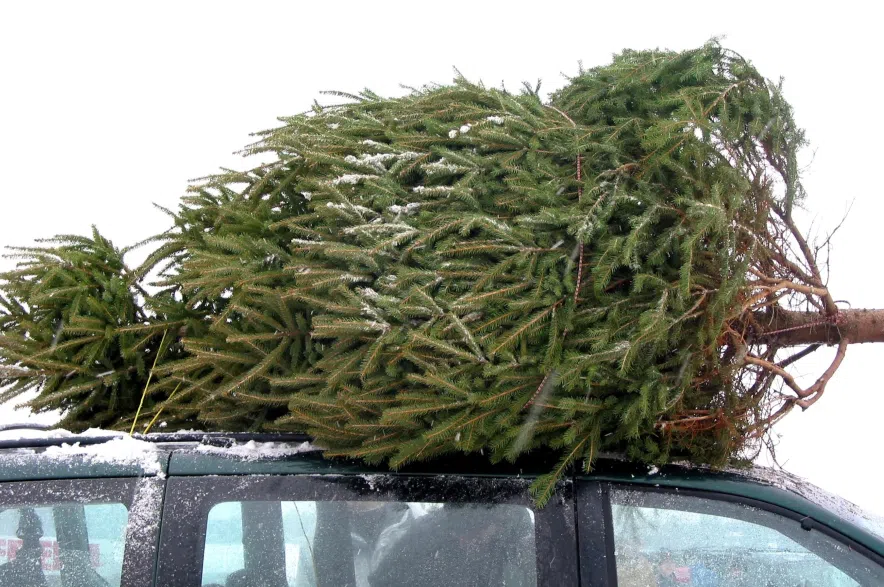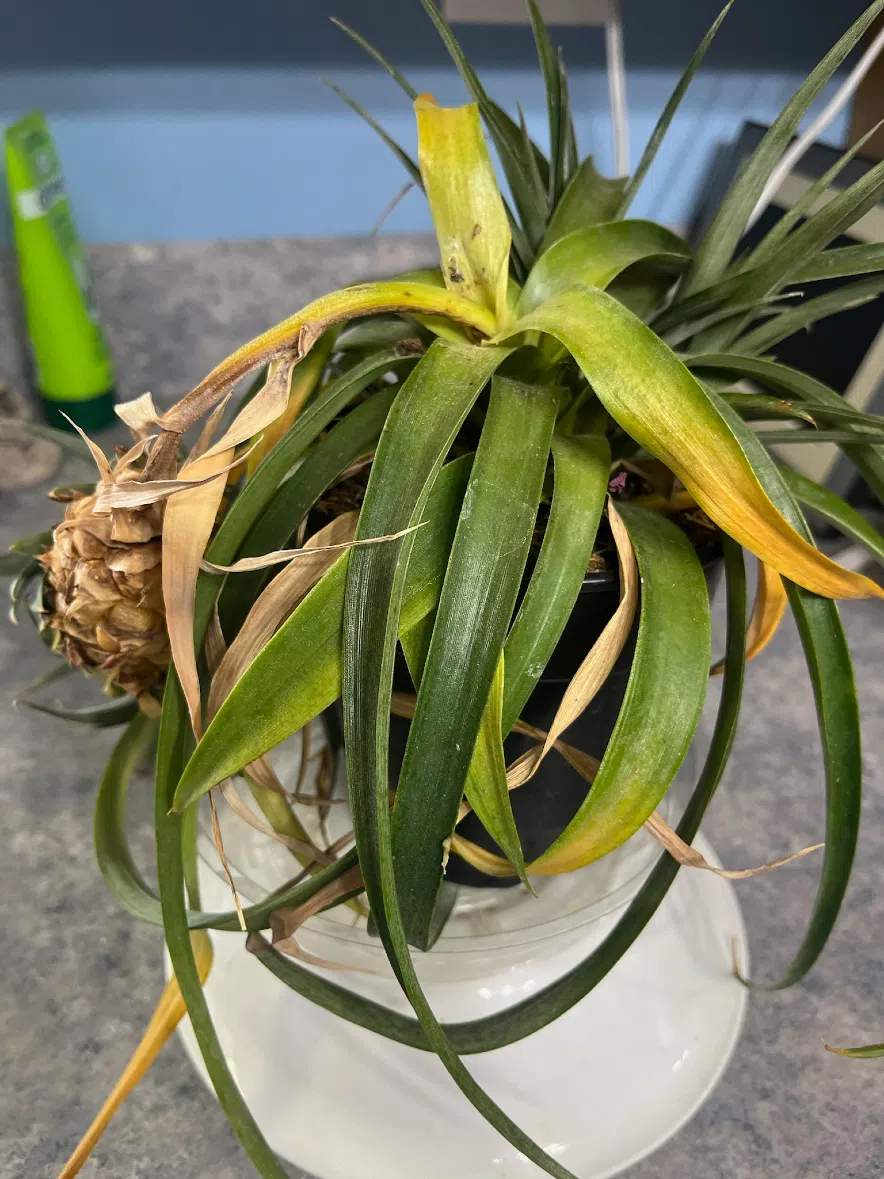Jill and Rick Van Duyvendyk answer all your gardening questions in Garden Talk on 650 CKOM and 980 CJME every Sunday morning from 9 a.m. to 11 a.m.
Here are a selection of questions and answers from the Nov. 17 show:
Q: How can I store my Christmas tree if I buy it in mid-November?
A: Store it in the shade and put it in a bucket of water and let it suck that up. You don’t need to cut it off yet, but when you go to set up the tree inside make a fresh cut. Take around an inch and a half off because when you buy them the trees have been cut for at least a couple of weeks, and up to month or more. Make that fresh cut just before you put in the stand, don’t leave it overnight.
You can use a product called Wilt-Pruf or similar and spray your tree completely before you bring it into the house, and let it dry. You can use Stafresh or another Christmas tree preservative in the water. That works just like that little package of powder you get with the cut flowers.
See Dutch Growers guide to live Christmas tree care here.
Q: Can I grow a piece of ginger from the local grocery store that now it has shoots on it?
A: Put it into water to grow some roots on it. If it already has some roots on it, you can put it into soil in a small pot. You can always upsize the pot as the plant grows. Put it on a bright windowsill or under a grow light. As long as it has roots and you keep it moist, it’ll survive. It needs at least three or four leaves and all the roots you can get. Use an organic vegetable type of fertilizer.
Q: Is it OK to use manure from a pile that has rotted for years and is completely black as garden box soil?
A: Used on its own, it will be a little too strong, so mix it with some soil — 50 per cent topsoil and 50 per cent manure, or even less than that. If you are going to grow ground crops, use 25 per cent manure because you might get potato scab with a 50 per cent mix. For beans, corn, and peas you can use 50 per cent. You can also add something that keeps it from getting hard, unless the manure has little sticks in it to prevent that.
Read more:
- Garden Talk: Do mushrooms at a tree base need to be removed?
- Garden Talk: Protect your trees from pests over winter
- Garden Talk: What maples in Saskatchewan get red leaves in fall?
- Garden Talk: How can I stop deer eating my cedars?
Q: Why does the soil in my bird of paradise plant shrink up between
waterings?
A: Bird of paradise plants like to be moist, but also to dry out between waterings. The pot (pictured above) is probably full of roots, so even when you water it, it dries out fairly quickly as they have pretty good sized leaves on, and when it dries out the soil contracts.
When you water a pot like that most of the water just goes down the sides of the pot. The best way is to bring it to a sink and water it slowly so the whole root ball is hydrated, otherwise most of the water goes down the side and out the bottom of the pot. Plug the holes in the bottom of the pot or set it in a tray of water to get some capillary action.
If you want to put it in another pot use tropical plant mix. Bird of paradise plants tend to have the roots on the side so don’t go from a six-inch pot to a 12-inch or 16-inch pot, use an eight-inch pot. When you pull the plant out of the pot, you’ll see all the roots spiralled around the outside edge of the pot, so take your fingers and tickle some of those roots loose, then plant it so that some of those roots are exposed.
Q: Am I slowly killing my pineapple plant (pictured)? I have it about six inches under a grow light and water it about every 10 to 14 days. It has yellow leaves and looks sickly.
A: Pineapples don’t like to dry out between waterings, so keep it moist. They also need indirect light, not direct sunlight, so six inches away from the grow light may be too close. When they’re growing in Hawaii, they’re out in the open sun, but don’t put an indoor pineapple plant in direct sunlight.
Make sure to not overwater it — the bottom part of the old pineapple in the ground should not be mushy or brown at all, it should be firm. Stick your finger into the soil and if you feel some moisture, don’t water it. Apply nutrients every fourth watering. The soil should be well-drained, almost like a cactus soil.
Q: How can I prevent red lily beetles next year?
A: Put some diatomaceous earth on the soil around the plants in early spring. If it rains, you will have to reapply it because it works best when it’s dry. It basically dehydrates the beetles. Otherwise you need to look for little orange eggs on the underside of the leaves. You can use a lint roller to collect them or scrape them off with your fingernail.
Q: I am putting a 10-inch lift on my raised garden beds and want to prevent raspberry and goat weed from growing through before adding the soil. How do I do that?
A: The best thing to do is to dig out as many roots as you can, but you’re not going to get them all, especially goat weed. You can put a landscape fabric down, not a heavy-duty one but a cheaper landscape to allow moisture to drain.
If you’re going to grow root crops, remember if you are going to put the fabric 10 inches down they won’t grow below that, which makes it hard to grow things like potatoes and carrots. Some carrots get longer than 10 inches. Otherwise you’re just going to have to deal with the weeds as they come up. You can just till the soil and let it sit fallow for the summer, so you can keep digging up the weeds.
Q: Can dried kernels of peaches and cream corn work for seed next year?
A: Yes. Just store them like you would normal garden seeds — in the refrigerator or somewhere where it’s cool and dry. You can start them indoors in the middle of April, and transplant them as a bedding plant to get a head start.
Q: Should I water black spruce seedlings planted this spring, as we have not had any moisture for several weeks?
A: Probe the soil at least six to eight inches down, and if it’s bone dry, give it some water.
Q: My asparagus patch (pictured) is about five years old. Can I cut it down now, or leave it?
A: Don’t cut it down a lot because it catches lots of snow, which helps protect the plants in winter. You could cut it down by half if you want, just take the tops off. That will clean it up for spring.
Q: I have six poplar trees out at my cabin at Fishing Lake. Is now a good time to move them and, if so, how big should the root ball be?
A: How tall they are makes a difference. If you have a tool or machine, you can move them right now, just make sure to water them in. Younger poplars are best moved around April 15, when the frost comes out of the ground.
If you move them by machine it’s not going to make a difference because you can take the whole root ball. You take a the root ball and get them watered in afterwards they’ll be fine, but if you have to pull them out though and there’s no soil attached to these roots I’d wait until April.
Q: Should the bags of leaves I placed around my hydrangeas touch the trunks?
A: You want the leaves to be covering as much of the roots as you can Right, so the bag should be wide and shouldn’t come close to the trunk unless you’re going to tie the top. Just leave the top of the bag open but if the plastic bag is leaning against the trunk it won’t really matter as it is only there for the winter.
Clear or black plastic absorbs heat so if the sun comes out and you get a Chinook, it’s going to heat up the trunk and then cool again. It acts like a little greenhouse, so if you can pull it away from the trunk, it’s better. White plastic will not be a problem.
These questions and answers have been edited and condensed.
Read more:














